What Makes Nepal Tea So Special?

What Makes Nepal Tea So Special? A Flavor, Origin & Craft Guide
Discover the rich flavors, pristine origins, and artisanal craftsmanship that make Nepali tea a rising favorite among tea lovers worldwide.
The World is Falling in Love with Nepal Tea
If you’ve ever sipped a cup of tea and wondered where it truly came from, you’re not alone. Tea lovers are increasingly seeking origin stories, unique flavors, and small-batch integrity. And nowhere do those qualities converge more beautifully than in Nepal.
In this guide, we’ll explore what sets Nepal tea apart—from the stunning Himalayan terroir to the handpicked craftsmanship, flavor depth, and sustainable practices that make each cup unforgettable.
🌱 A Taste of Elevation: Nepal’s Unique Terroir
Nepal's teas are grown in the Ilam region, perched at altitudes between 4,000 and 7,000 feet. This high elevation, combined with cool mountain air, rich soil, and misty microclimates, nurtures slow-growing tea plants that develop intensely aromatic leaves and complex flavor profiles.
Compared to more commercialized tea regions, Ilam’s gardens produce small-batch teas that are nuanced, layered, and alive with character.
✨ Try it: Himalayan Golden Black Tea — Our award-winning black tea with golden tips, a smooth body, and notes of honey, malt, and dried apricot.
🫖 Handcrafted with Heart: Small-Scale Production
Unlike large plantations in India or China, most Nepali tea is produced by small cooperatives or family farms. The tea is handpicked, rolled, and dried using traditional techniques that emphasize care over quantity.

This artisan approach allows for:
-
More tippy leaves and whole buds
-
Minimal oxidation or bruising
-
Cleaner, more vibrant cups
🌿 Featured: Spring White Buds — A delicate, silvery white tea plucked in early spring and featured in The New York Times. With notes of melon, honey, and fresh hay, it delivers an unforgettable cup.
💚 Clean Farming: Organic and Sustainable by Nature
Many Nepali farmers use organic, pesticide-free growing methods by necessity and tradition. Because tea is grown in remote, high-altitude regions, it’s naturally shielded from pests—meaning no synthetic chemicals are needed.
You’ll taste the difference in every cup:
-
No bitterness or harsh residue
-
Cleaner, smoother aftertaste
-
Healthier for the soil and the farmers
🌱 Learn more in: Is Organic Tea Really Better?
🌿 Sip This: Pokhara Classic Green Tea — Clean, smooth, and naturally grown. Notes of toasted sesame and citrus make it ideal for daily sipping.
🍇 Flavor Like No Other: A Sensory Journey
Nepal teas are often compared to Darjeeling, but with a bolder, fruitier edge. Thanks to meticulous leaf handling and slow growth, the flavor notes are exceptional.
Here’s a quick flavor snapshot of some standout types:
| Tea Type | Flavor Notes |
|---|---|
| Black | Malt, toasted walnut, red grape, stone fruit |
| Green | Grassy, toasted sesame, citrus peel |
| White | Honey, dried flowers, melon, subtle herbs |
| Oolong | Roasted grain, wildflower, apricot, cream |
🫖 Must-Try: Annapurna Amber Oolong — A richly layered oolong with notes of peach, toasted hazelnut, and honey. Handcrafted for depth and smoothness.
✨ Explore: Sherpa Breakfast — A bold black tea for morning energy with hints of red grape, malt, and walnut.
🌍 Better Than Blends: Why Single-Origin Matters
Many mass-market teas are blended from multiple sources, losing their identity and character. Nepali teas are often single-origin, which means:
-
You know exactly where it’s grown
-
You can taste the pure terroir
-
You support traceable, ethical farming
Every sip supports Nepal’s rural economy, women-led co-ops, and biodiversity efforts.
Explore More Nepali Tea Wisdom
📘 Helpful Guides:
-
Beginner’s Guide to Choosing Loose Leaf Tea ✅ cornerstone
🛒 Shop Our Teas:
❓ FAQ: What People Ask About Nepal Tea
Is Nepal tea the same as Darjeeling tea?
No. While both regions are neighbors, Nepal teas often have bolder flavors and are less commercially processed.
Is Nepali tea organic?
Most Nepali teas are naturally organic due to high-altitude farming and traditional growing methods.
What does Nepali black tea taste like?
Full-bodied, smooth, and layered with malt, dried fruit, and earthy undertones.
Is Nepal tea good for health?
Yes—especially because it’s often pesticide-free, minimally processed, and rich in antioxidants.
Can I get fresh harvest teas from Nepal?
Absolutely. Many producers now offer seasonal flushes—like spring white teas, summer oolongs, and autumn black teas.
From Farm to Cup: Why Nepal Tea Deserves Your Cup
Nepali tea is more than just a beverage—it’s a story of land, people, and passion. From the first pluck in Ilam’s misty hills to your warm cup at home, each leaf carries flavor, purity, and purpose.
🛍️ Ready to experience it?
👉 Shop Our Single-Origin Nepal Teas
📚 Or start with our Beginner’s Guide to find your perfect brew.
